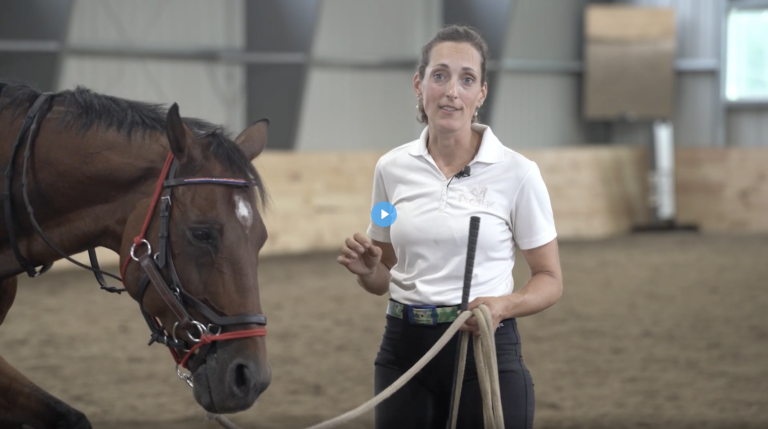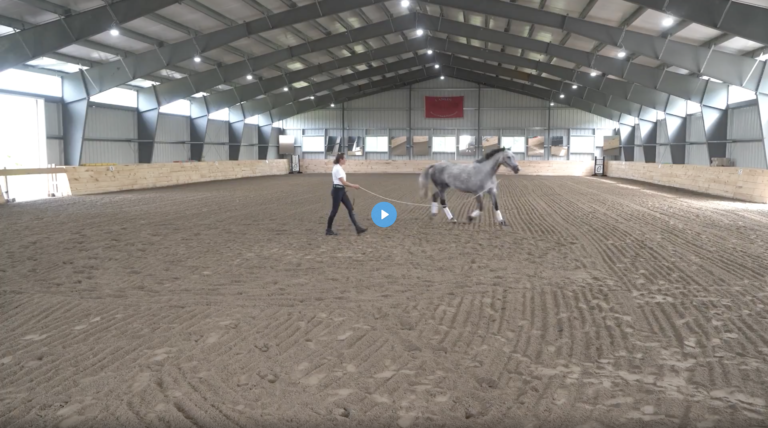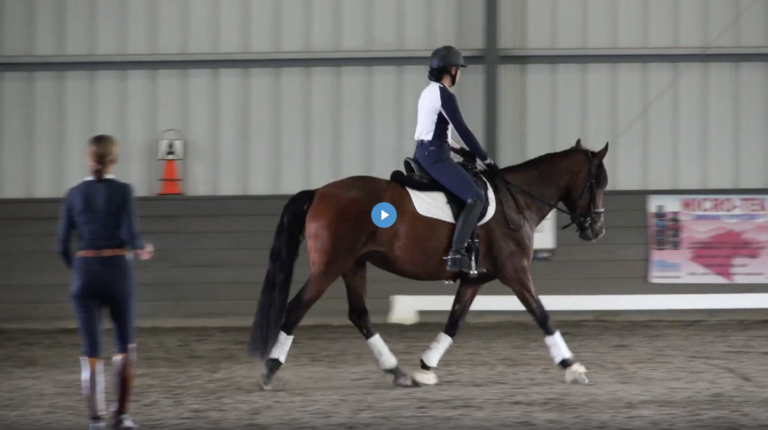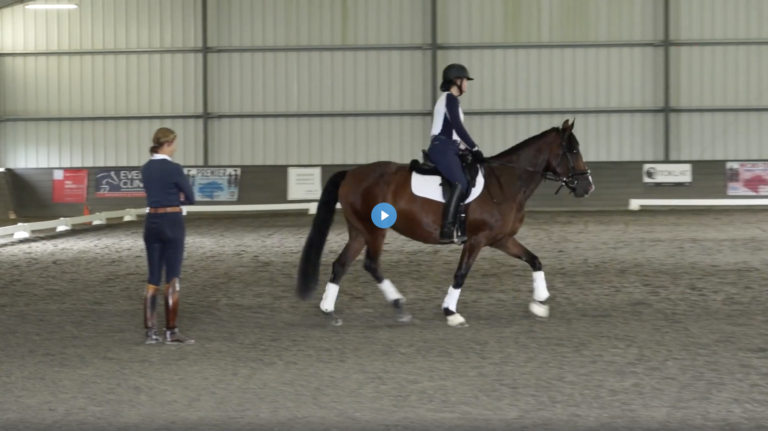Heather Sansom is the author of rider fitness ebooks Complete Core Workout for Rider, and a regular columnist in several equestrian publications including Dressage Today.EquiFITT.com offers rider fitness clinics & workshops, Centered Riding instruction, and convenient distance eCoaching for riders anywhere. Subscribe to receive free monthly Equestrian Fittips, and download rider fitness eBooks at:www.equifitt.com/resources.html
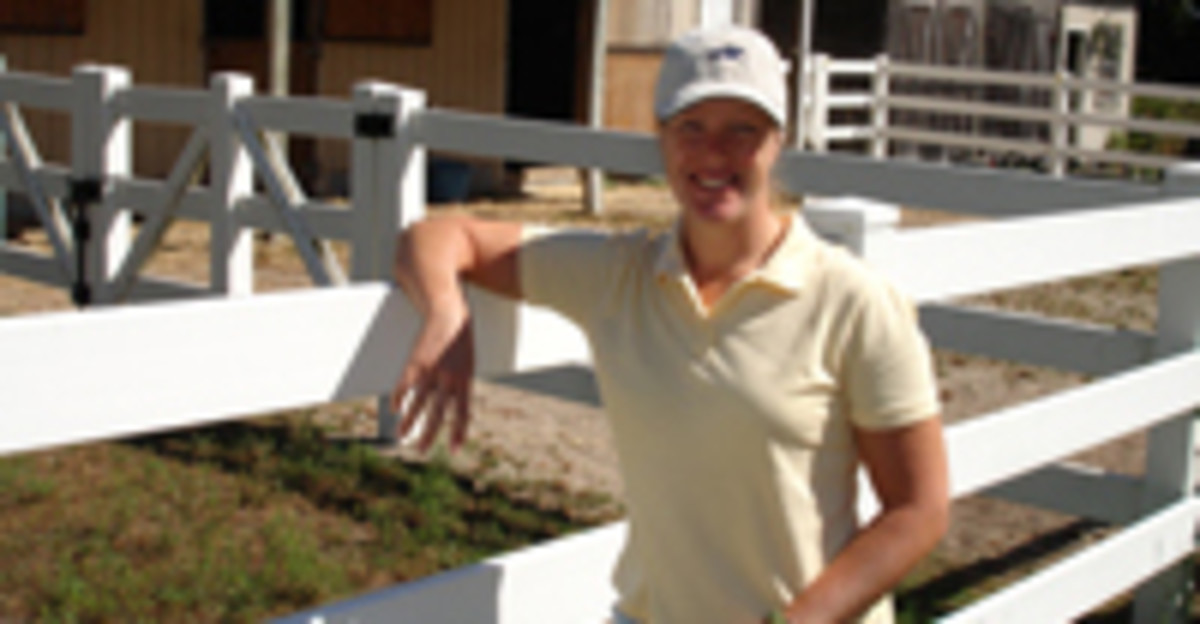
In last month’s piece we discussed the importance of flexibility. If I could pick the No. 1 tight area most riders want to address, it would be the hips. Lack of flexibility and stability in the hips is especially common in riders over 30, because hip mobility often diminishes with age. Whereas someone in the general population might not be inconvenienced by their gradually diminishing hip mobility, a rider is. Unlike other sports, your primary contact with “ground” as a rider is your seat and thighs. In other sports, it is your feet, and all motion is relative to the body’s ability to transfer force from the ground, through the body. In riding, you are balancing on your seat, using your thighs for further balance and to communicate aids, and your feet must remain “soft” to allow for the stirrup irons to rise up and down with the horse’s stride.
When you are running or playing other sports, your source of power comes from the equal and opposite reaction of force created when your feet strike off or push into the ground. In riding, you are not trying to push down onto your horse to gain momentum either from your seat or your stirrups. Even in motions which may appear to a non-rider to be related to foot-force, such as rising trot or lifting out of the saddle over a fence, your weight is actually distributed along the length of your thigh, and you are engaged in using the horse’s forward momentum, not just pushing up from the stirrups. In fact, pushing on the stirrups will drive him onto the forehand, which is rarely desirable in any discipline, but especially not in dressage.
I would be so interested to know if someone placed little scales in stirrups, what percentage of your body-weight is actually in the stirrup at each movement. No research data currently exists. (If you want to do this research with me, let me know!) However, we know from saddle fitting technologies such as impression saddle-pads that your body-weight is not entirely in the stirrup, because saddle fitting measures pressure of your seat and thigh.
Sitting in the saddle, your seat bones need to be able to move in all four planes so that you can follow your horse’s motion: up and down, side to side, forward and back, and even cross-wise somewhat as in lateral movements. There is an excellent YouTube video that illustrates your seat bone movement nicely.
We not only need to be able to “ride” the horse’s movement, but also able to ‘read’ it and direct it with the seat. When your hips are stiff, you are compromised in all three of those activities.
Riders have a tendency to orient their response to the motion of the front legs (as in knowing which diagonal to be on in rising trot). Feedback about the phases of movement of the horse’s hind legs comes up through his back to your seat bones. Even if you are slightly out of the saddle because you are hacking in two point or doing other exercises than flatwork, you still need to feel his back indirectly to your seat-bones, through your thighs.
If you have stiff hips, you are less able to feel the movement, and the timing of your aids may be off as a result. When we give mal-timed aids to the horse, we can create confusion, tension or just an awkward production of a movement that could be smoother. We impede impulsion and responsiveness because we are blocking the way he needs to move to place his next step.
In addition to passively resisting your horse’s movement, tight hips will also cause your seat and legs to signal things to your horse, which you may not realize are being communicated. It’s important to appreciate that in your physical ‘language’ with your horse, your seat and thighs are much louder to him than your hands and lower legs.
For example, I have seen many riders kicking their horse with their heel because he seems lazy, when in fact their knees are pinching in on him for balance and effectively telling him to slow down at the same time. I have also seen a rider applying spur or stick to their horse who is drifting in or out, when in fact their seat pressure was unevenly pitched in the direction of the drift, and their seat was telling the horse to move in that direction. Frequently when a horse will not pick up a canter lead, I have noticed that the rider does not have the same mobility on that side of their hip, as on the side where the horse picks up the lead easily. I am not talking about abusive situations–just situations where a rider was sending conflicting signals without being aware.
With all of the movement required in your hips, your body needs to create stability in order to find balance within the movement. You cannot for example, just be a floppy sack of potatoes. If you do not have sufficient strength in the major muscles crossing your hips and responsible for hip movement, your body will create stability through rigidity, rather than the relaxed responsiveness discussed in previous articles.
As I mentioned, if you are over 30, you are naturally tending toward diminished hip mobility anyway as your muscles slowly atrophy and your body tightens up ligament and fascial tissue in the area to create stability, and as your body’s range of motion decreases. Simply, we have a more sedentary lifestyle and tend to move less as we age. So the range of motion in hips is reduced. The older we get, the more deliberate we have to be about stretching because we are losing flexibility on a daily basis without purposeful acts to counter this trend.
If you also happen to have lower core tone, your body will tend to try even more to create stability in your torso through tightening in the hips.
Getting more flexible hips that are still able to balance in motion requires both strength and flexibility through all the muscles that cross the pelvis. Major ones include Psoas (hip flexors), all the big leg muscles on all four sides, and your waist area core muscles. If you have tight sides, those muscles are not only preventing your ribs from bending: they are also holding your hips.
Hips and seat are such an important foundational building block for riders in any discipline that I will have to continue the discussion in future articles.
This month, I’d like to build on the stretch suggestion from last month’s piece (the ‘fold and roll’) with some more stretches to open up your hips and reduce tension.
Side-to-Side Lunge
Start with legs fairly wide and simply shift your weight slowly and rhythmically from side to side. Using a dynamic motion before you ride will help warm up your muscles. At the end of your ride or day, you can hold stretches (static stretching) and take your time to get a little deeper into the muscle and ligament tissues through longer stretching. This stretch opens up your hips by lengthening inner thigh and groin area muscles.
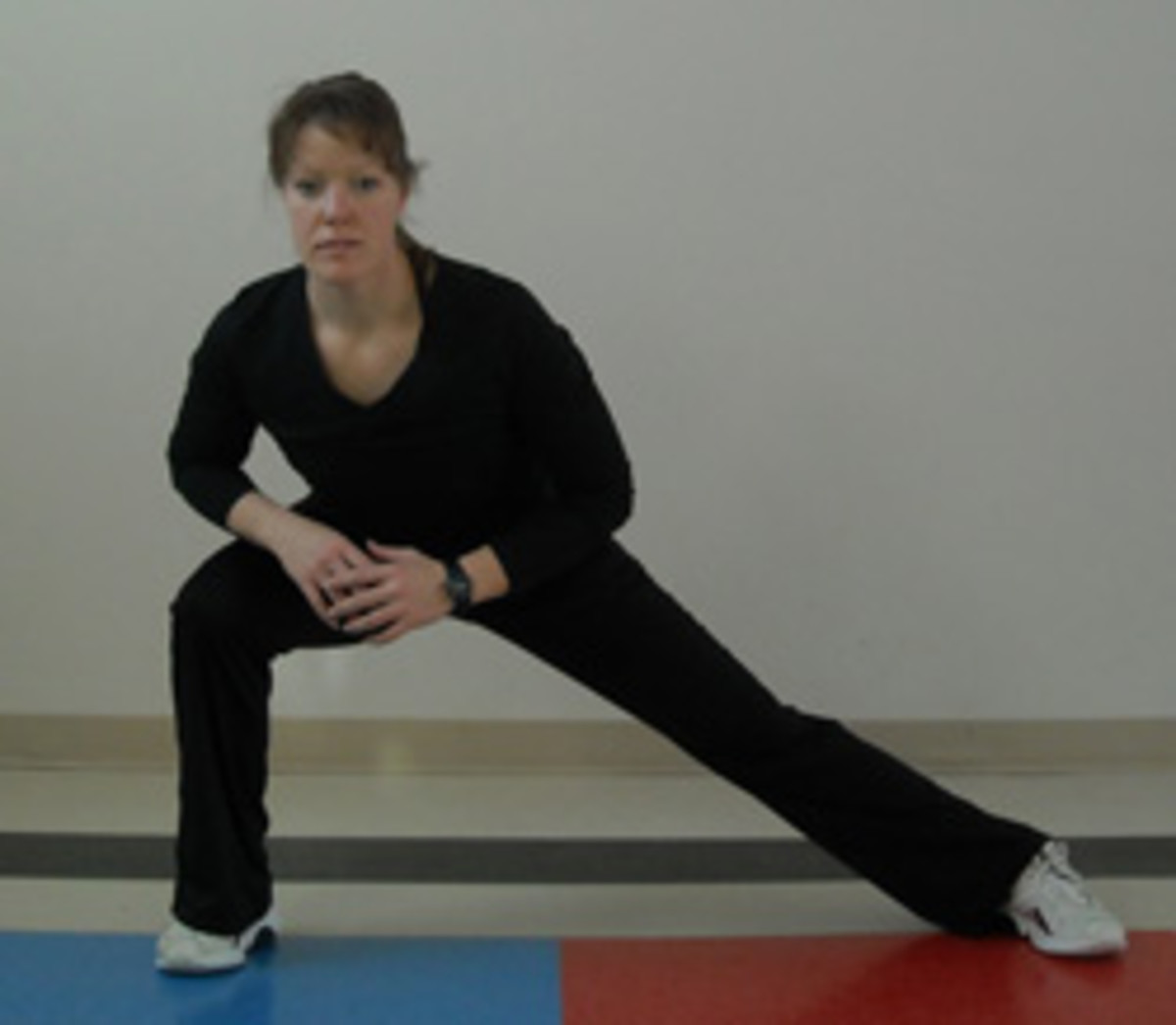
Rotational Variation
I like to move from a side lunge stretch by rotating around and forward to continue to gently loosen up muscles around the hip socket itself. If you are schooling over Level 1, it gets more important to have mobility in your hip socket because you begin to do lateral and other movements in more planes of motion and with more control than a Training or Level 1 ride requires.
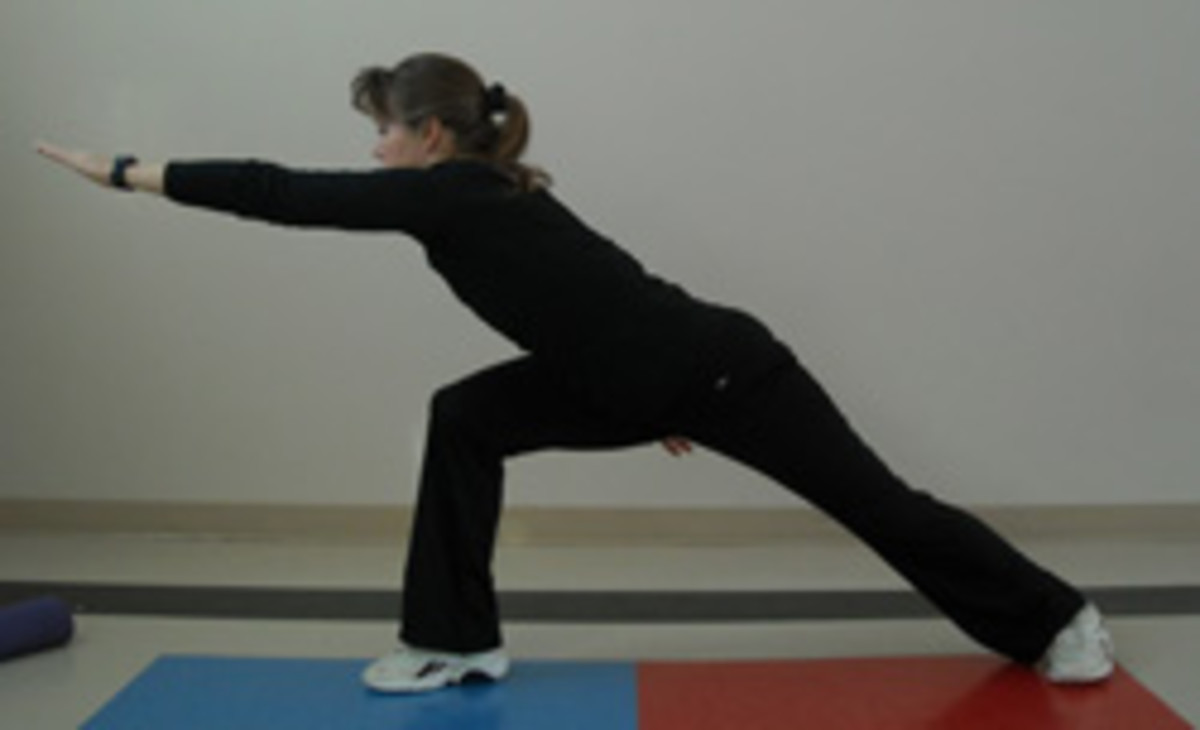
Outer Thigh (Iliotibial Band) Stretch
It can be very difficult to stretch your outer thigh. Your gluteals & IT band (iliotibial band of ligament like tissue down the side of your leg) can become tight in the seated position. As a rule of thumb, it’s important to stretch muscles on both sides of a joint, so if you do the inner thigh stretch, a stretch for the opposite area is also needed. My weight in this photo is mostly in my arms and the bent leg in the front.
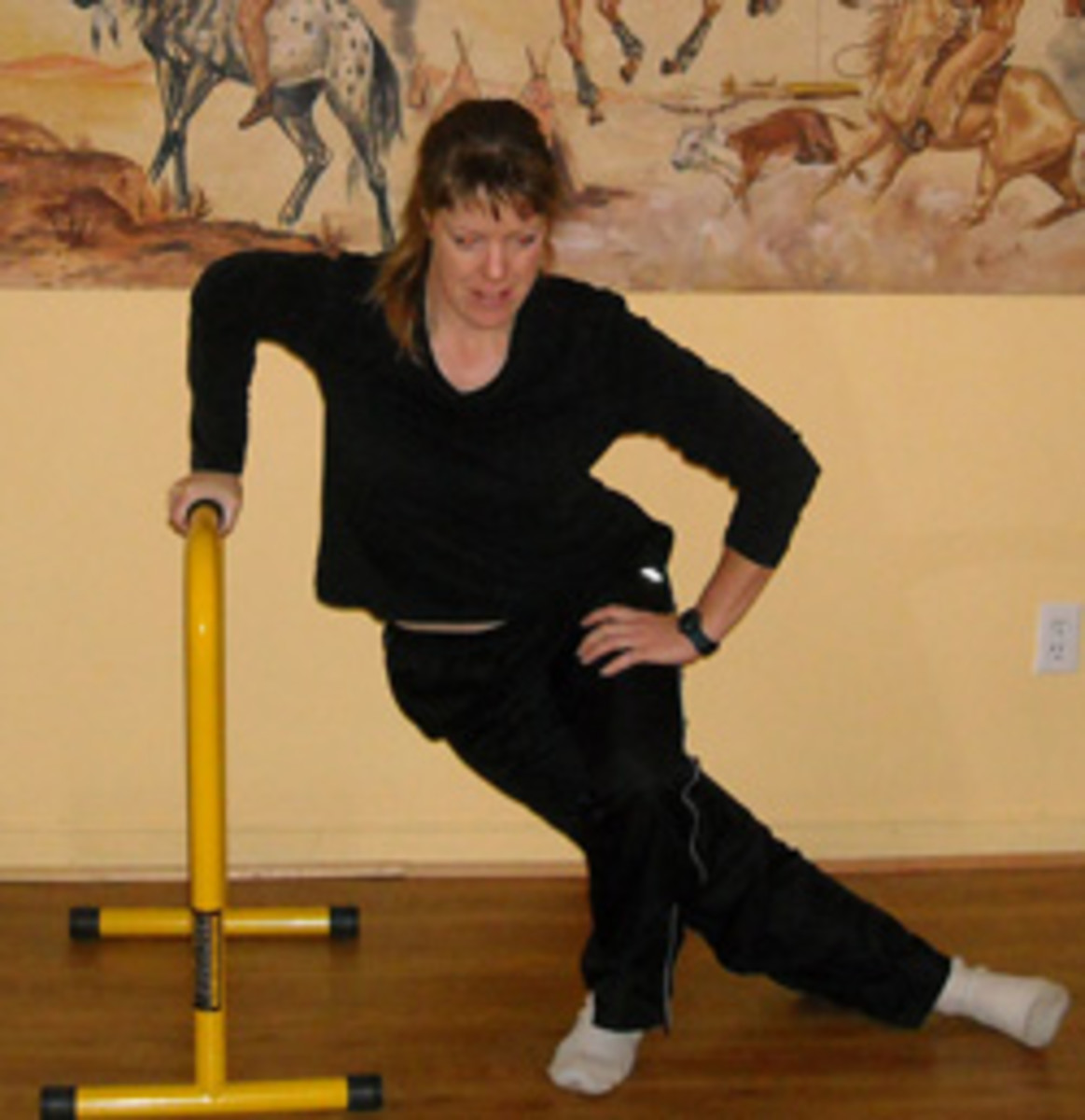
Pigeon
In this photo, yoga for riders’ specialist Louise Sattler (www.gallopingyoga.com) shows a pigeon pose. You do not need to drop your body as low as she is doing. You can use props to hold yourself in whatever position brings you to a stretch. This stretch is particularly good for both the hip flexors (rear leg) and gluteals and piriformis (front leg). Riders with sciatic issues would benefit from this stretch. This stretch is normally done as a static stretch, whereas the above stretches can also be performed in flowing or dynamic gentle motion.
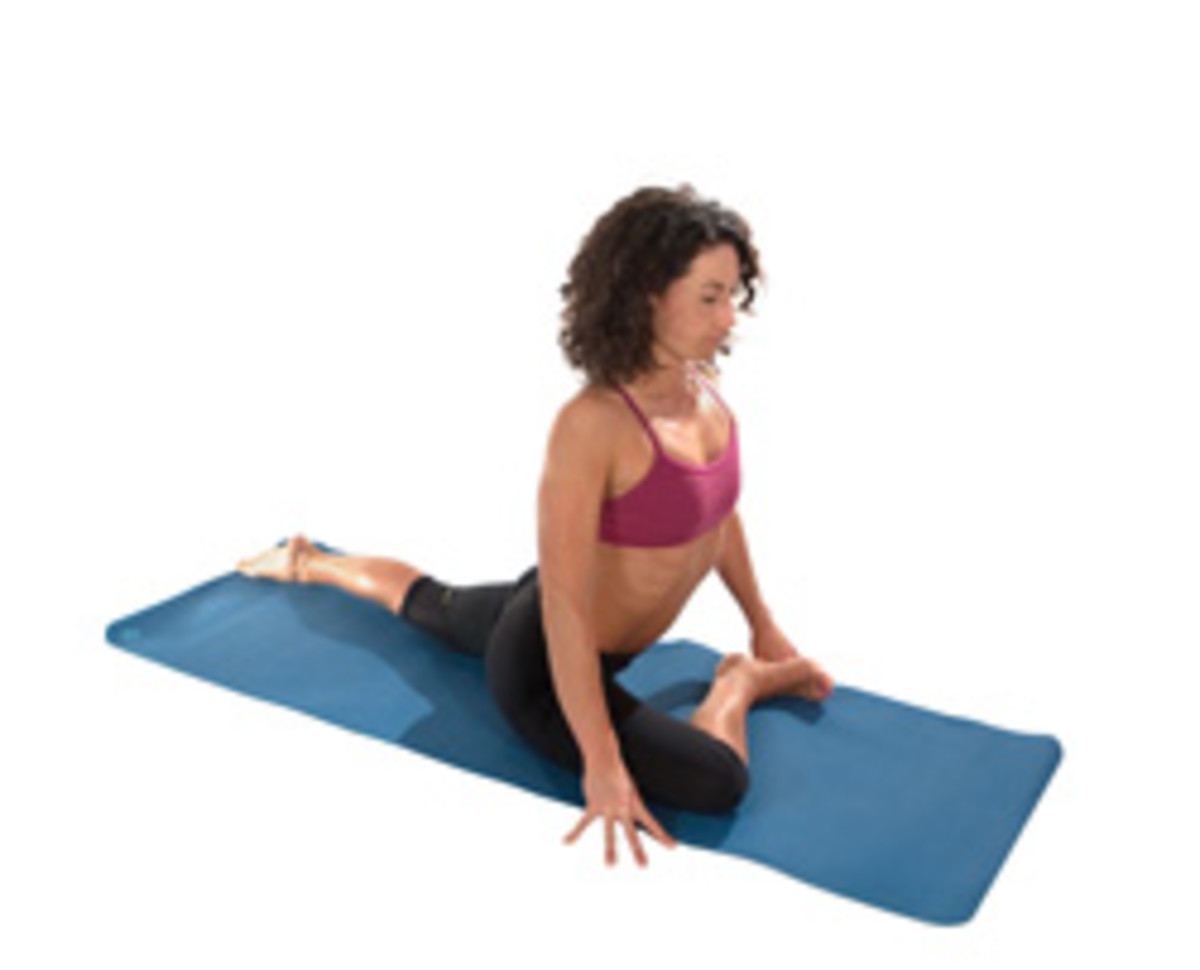
All stretching should be comfortable. Otherwise it will stimulate contraction, rather than invite your muscle fibers to lengthen. A pull or slight burning sensation in muscles and ligaments is fine, but pain in joints signals that you need to back off and stretch more conservatively.


